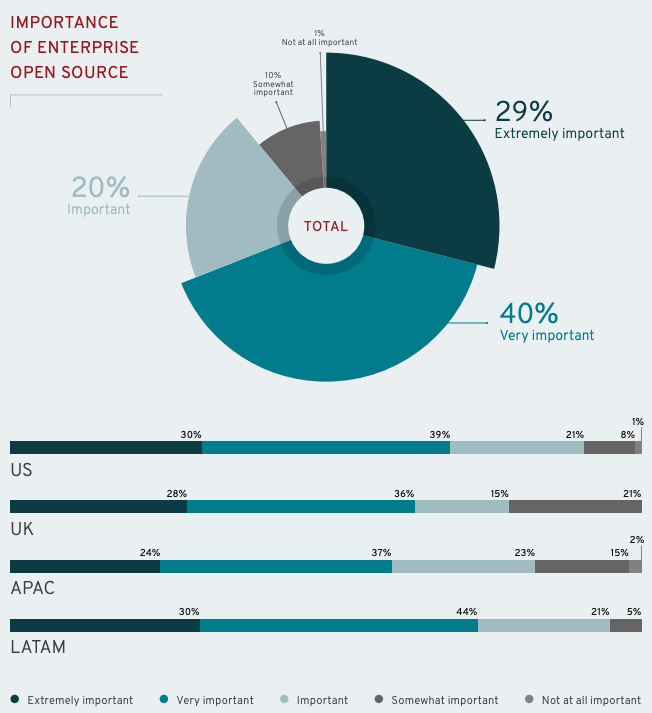Open Source Is Important To 99% Enterprises, Red Hat Survey Finds

For many enterprises, open source technologies are becoming an integral part of their businesses and the way they do things. Technology giants like Google and Microsoft are also acknowledging the power of open source — Google Cloud’s recent partnership with companies like Elastic, MongoDB, Redis Labs, Neo4j, and Confluent is a testament to the same.
But what about the actual extent of this open source revolution? Is it limited to just a bunch of top-tier companies that get just enough press coverage to bring their open source endeavors into the limelight? Well, Linux giant Red Hat’s “The State of Enterprise Open Source” is here to answer some important questions.
This report is a result of 950 interviews conducted with the IT leaders spread across the world to get a better idea of the different geographic regions. Also, it was required for the participants to be familiar with enterprise open source and Linux.
Open source is everywhere
Red Hat concluded that the real question isn’t if the open source is important in the business environment as its importance is already established. It found that just 1% of businesses refused to admit the importance of open source.

A total of 69% participants said that open source is Extremely to Very Important. If we combine the Important and Somewhat Important responses, the combined number shoots up to 99%.
It was pleasing to see open source being used in areas like cloud, security, storage, and analytics, which are traditionally associated with closed source applications.
When asked about the top benefits of using open source solutions, security and innovation were rated as the main reasons. The other reasons were lower cost, higher software quality, and the ability to customize the applications as per requirements.
The adoption is bound to increase
The most exciting part of the report deals with the expected growth rate when it comes to adoption. About 59% of businesses expect an increase in the usage of open source applications over the next 12 months. It perfectly makes sense to increase their adoption levels if their current deployments are turning out to be fruitful.
Also Read: Best Linux Games With Steam Support






